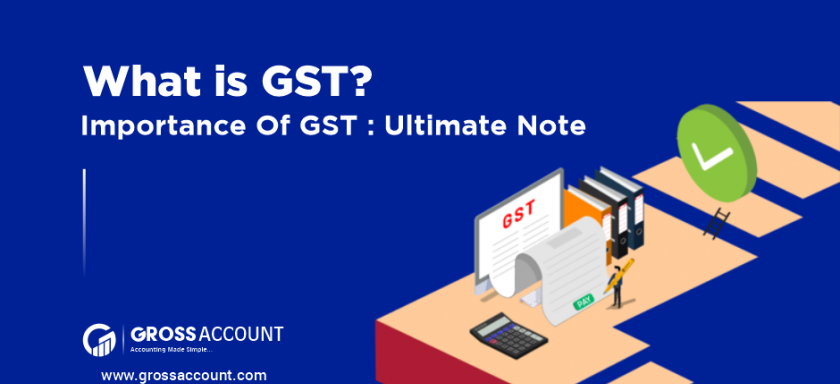GST is a Goods and Services Tax. It is a tax that any consumer has to pay when they buy any products or services for example Food, Clothes, daily routine needs products, transportation, travel, electronic items, etc. The GST is an indirect text concept like consumers will not pay direct tax to the government, but it is applied to any seller or manufacturer. The seller or manufacturers add that tax into their cost, and consumers have to pay the total price with GST.
What is GST?
Prime Minister Narendra Modi introduced and applied GST at midnight on 1 July 2017. GST is the biggest change in India’s tax system. GST changed the definition of the Taxation system. Still, the biggest benefit of GST was that it binds entire India into a single unified market. GST takes tax differently with the different slabs of products or goods. As GST the biggest revolution in India allows the real GDP growth to the Indian market to hit 6.75 percent in a year. GST is a comprehensive indirect Tax that brings the indirect Tax under the one umbrella.
Also read: Benefits Of Using GST Billing Software In Business
Working of GST
For example, one seller sells the pen with raw material, which includes 10% of GST. This means the seller pays rupees 1 with the original cost of rupees 9. While manufacturing the pen seller will add the rupees 5 to the cost of original material, now the total value of the pen is Rs. 10+ Rs. 5 = Rs. 15. The 10% GST cost will be Rupees 1.50. Collected by the seller, the GST amount will be submitted to the government.
Now the whole seller purchases the pen with 15 rupees. And he sells it with rupees 17. This is how the GST works.
Goods and Services are categorized into the different slab. Daily needs are included in the lower slab and luxury and comfort goods are included in the higher slab. The main purpose of this classification is the uniform distribution of affluence for residents of India.
Component of Goods and Services Tax
Goods and Services Tax distributed into three components. They are –
- CGST – Central Goods and Services Text is collected by the Central Government on goods in intra-state.
- SGST – State Goods and Services Tax is collected by the State Government on goods in the state.
- IGST – Integrated Goods and Services Tax collected by the central Government.
Benefits Of GST
To Trade
- Reduce the tax multiplicity
- Mollification of double tax
- Convenient for tax neutralization such as export
- Development of the local market
- Simple tax rule
- Fewer rates
- No need to differentiate the Goods and Services
To Consumer
- Simple tax concept
- Reduce the price of Goods and Services
- Equal price distribution in the whole country
- Crystal clear taxation system
- Increase employee opportunity
Also Read: Benefits Of Using GST Billing Software In Business
Other Benefits
- The use of the GST cascading tax will prevent input tax that will be applied to any goods and services at every stage of supply.
- Antonyms of all the laws on the process and cost of tax.
- More convenient for counterbalance especially for export as our products or goods are more competitive in the international market and give high support to the Indian product.
- Increase all over the performance of the investment in the country is an important benefit for the state.
- The burden of the Tax on the company has become lightweight that reduces the price and lower price means more consumers. That leads to more production that helps to grow the company.
- The environment of the company will be better, verify input credits online, support paper trail in the transaction.
- Simple process for the taxpayer, tax refund, well-established format (uniform) of the tax return.
- Common and easy differentiation of Goods and Services.
- There is a particular timeline for the important process such as registration, refund, etc.
- GST will be useful for more clear taxation, convenient breeding, GDP growth to the small center, states, industrialists, manufacturers, sellers, and the common man too.
- Liquation scheme for a small business industry – under GST small business with lower turnover can get the advantages as it has the option to lower Taxes by using the composition scheme.
Very easy and convenient online process – the whole process of GST from the registration to the return file, is being online and it is very easy to do. This is more convenient for start-ups especially. As they do not have to run to get several registrations such as service tax, excise VAT, etc.
- The number of breeding is less – earlier there were VAT and Excise taxes each of with their return.
- Describe solutions for E-commerce operators – earlier in the GST supply of goods through the e-commerce sector did not define. It is VAT law. GST brings a clear map for the e-commerce sector and till these are applicable for India. There are no obstacles regarding the inter-state supply of the goods.
- Improved capacity of the logistic – In an earlier day, logistic companies in India had to pay multiple taxes across states to deny the running CST and state entry tax during the intra-state supply. Due to those taxes, logistics industries decrease their capacity. With GST, those restrictions on the intra-state supply of goods are being lesser.
- Reduction in unnecessary cost is to increase the profit of business including transportation of goods.
- Small business or unorganized industry is bound regularly into the GST – in the earlier era; it was perhaps some industry in India like small construction and textile industry were unorganized. With the GST, there are some rules and arrangements of the payments and compliances, forget the input credit only when the supplier has accepted the amount. These are steps towards the regulation of the industry.
Conclusion
GST will take crystal clear and corruption-free tax operations. Decrease or remove the current indirect tax system. GST is seller-friendly as well as customer-friendly. GST will take drastic changes towards all stakeholders. As normal people, we all want to change the older taxation system. For that change we need GST.
GST wants to make India be a better negotiation in the raw of the international trade market. GST targets the increase in the taxpayer numbers by bringing the small scale industry and medium scale industry under the same window. This will give the outcome that the Indian market is more established and stable than before. Many Indian companies can compete with foreign companies due to GST.






